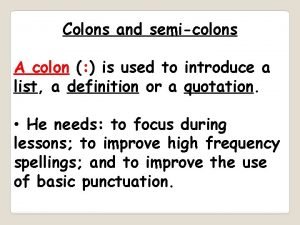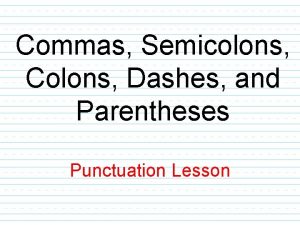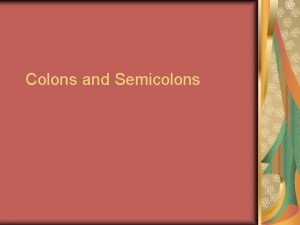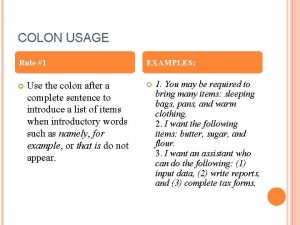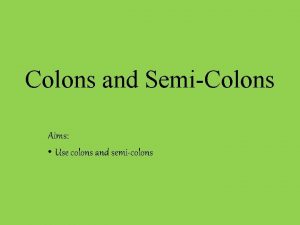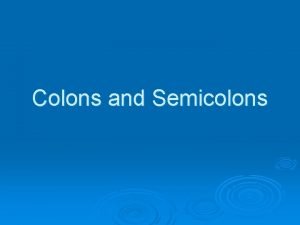Colons and SemiColons The semicolons major use is





- Slides: 5

Colons and Semi-Colons

The semi-colon’s major use is to join two complete sentences into a single written sentence when the following conditions are met: (1) The two sentences are felt to be too closely related to be separated by a full stop; (2) The second sentence begins with a conjunction such as however, therefore, furthermore, consequently, as a result, although, nevertheless or on the contrary. Learning to use the semi-colon is not very easy; however, it is very important. Here the semi-colon comes before the word ‘However’. Conjunctions like ‘however’ can ONLY exist after a semi-colon or a full stop – NEVER a comma.

Where would these be added? 1. The students were reluctant to use the semi-colon nevertheless their English teacher persevered. 2. The pupils initially struggled to use the semi-colon frequently however they soon became more confident. 3. Using ambitious punctuation adds style to your writing furthermore it makes your writing more impressive.

The colon is often used to introduce a list of items. For example: You will need to bring three things to the party: some food, something to drink, and a small gift for the hostess. This sentence contains a list of three items. The first part of the sentence tells you that there will be three things; then the colon tells you "here are three things".

You can also use a colon to introduce an explanation or a definition of something. For instance: I’ll tell you what I’m going to do: I’m going to quit! Elephant (noun): a large grey mammal found in Africa and India
